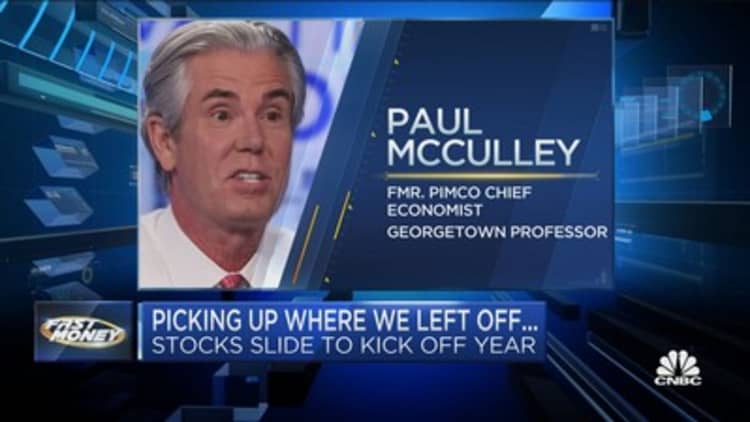
Stock futures rose Tuesday evening Wall Street began 2023 on a sour note.
Futures linked to the Dow Jones industrial average rose 0.04%, or 14 points, while S&P 500 and Nasdaq 100 futures rose 0.08% and 0.2%, respectively.
Stocks continued their lower session overnight as rate worries, high inflation and recession fears dampened hopes that Wall Street could kick off the new year on a positive note.
During regular trading on Tuesday, the Nasdaq fell 0.76%, while the Dow Jones Industrial Average and the S&P 500 fell 0.03% and 0.4%, respectively. Shares of Tesla fell more than 12% Delivery numbers that missed expectationswhen Apple fell 3.7% on reports of production cuts.
Six of the 11 major S&P sectors declined, leading to a decline in energy. The sector was the best performer in 2022 as oil prices lifted energy stocks. Communications services rose about 1.4%, led by Meta Platforms and Walt Disney.
“U.S. stocks were unable to hold on to earlier gains as tight policy and recession fears were front and center for investors,” Onda senior market analyst Ed Moya wrote in a note to clients on Tuesday. “Discount buying sparked another short-lived bear market rebound.”
Many investors believe that market after market will rebound The major averages were the worst year since 2008. The Federal Reserve and its tightening program have been hanging over markets lately, along with fears of a recession.
Investors will get more insight into what central bank members are thinking on Wednesday afternoon when the minutes of the central bank’s latest policy meeting are released. Earlier in the day, the jobs and labor turnover survey, or JOLTS, and ISM manufacturing data are due to be released.
Friday’s December jobs report will also be closely watched as it is the last reading on the labor market before the central bank’s meeting in February.
“It’s too early to start betting on a Fed pivot this year, which should create this difficult environment for stocks,” Moya said.